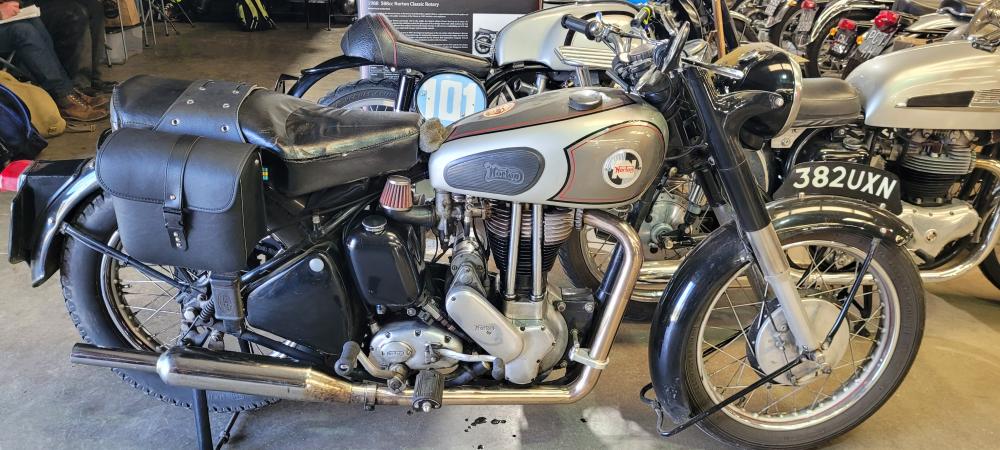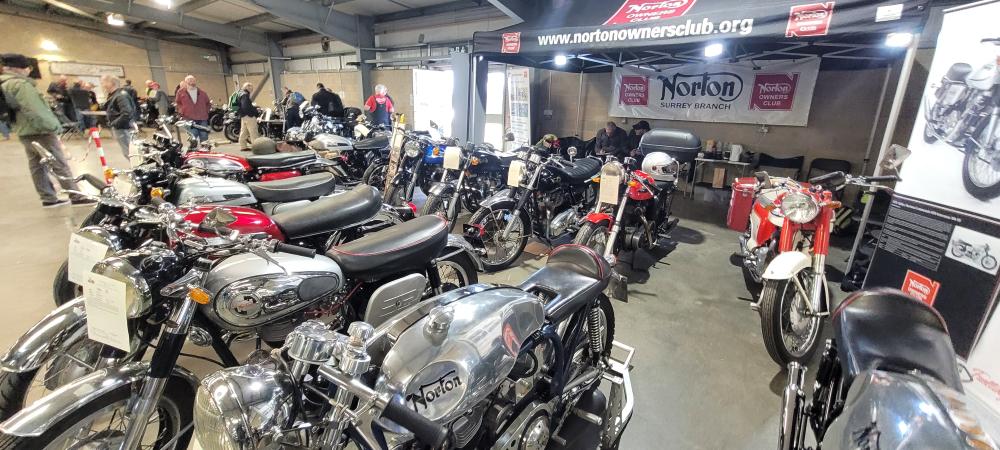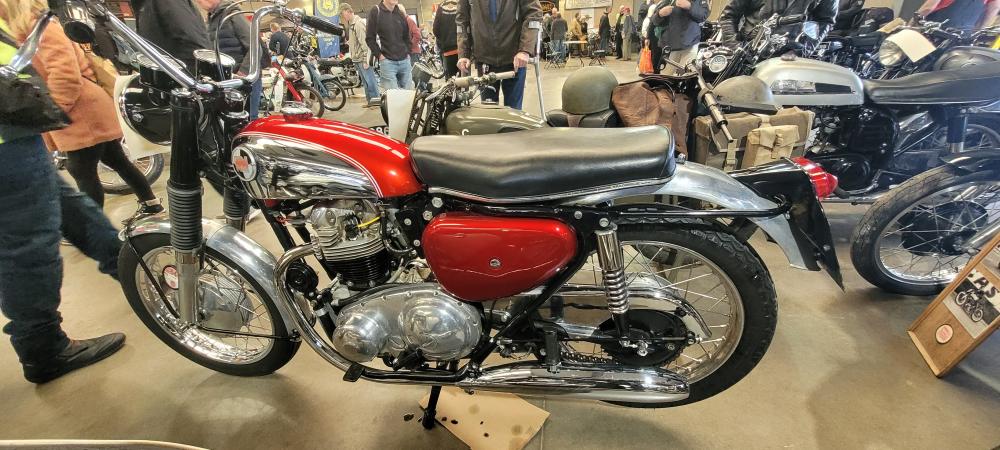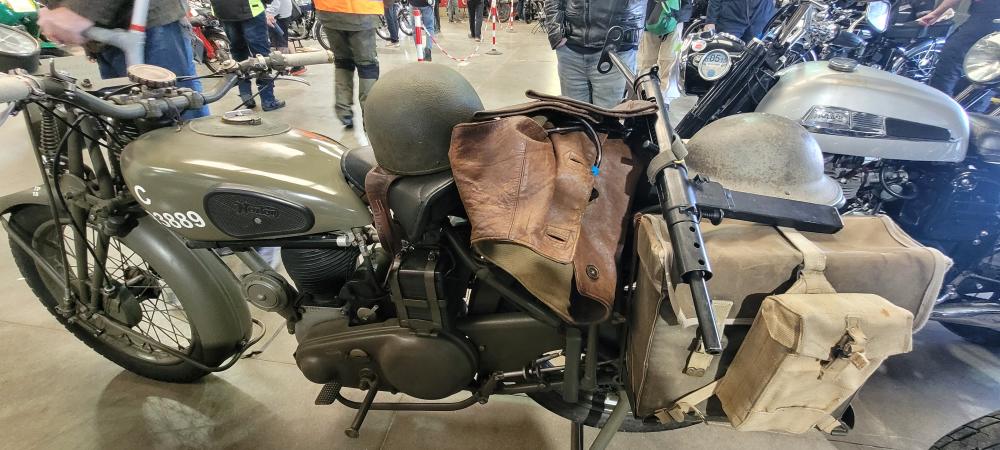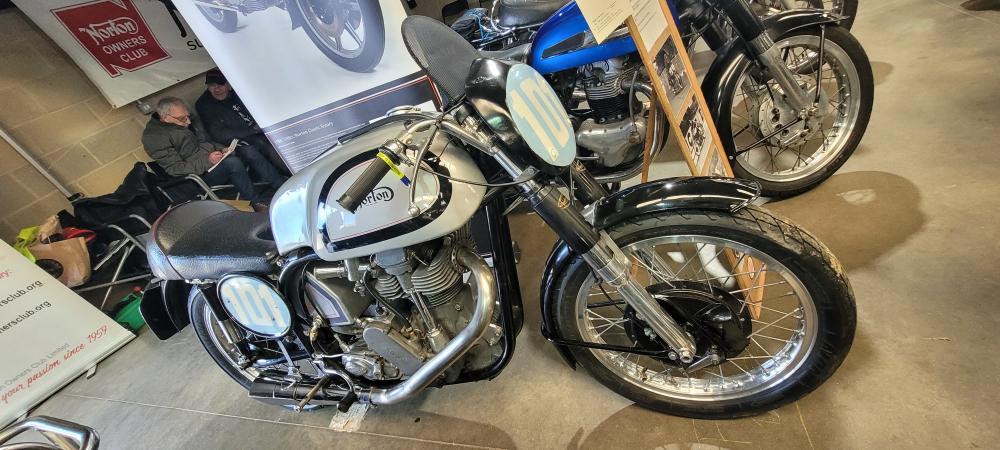• Single Cylinder
Until after WW2, Norton only produced single cylinder machines, initially using engines from other sources, but soon introducing side valve motors of their own design. Their first overhead valve engine was fitted to the Model 18, and the CS1 had the first overhead camshaft engine. The Norton singles had considerable racing success, culminating in the development of the engine that was used in the short stroke DOHC Manx racer
• Heavy Twins
In 1949, Norton broke with years of tradition and introduced their first twin cylinder engine machine, the Model 7. This developed into the famous range of twins, the Dominators including the tinware enclosed De Luxe versions and the superb 650SS. Although the Mercury was the last of the series, going on into 1970, the same basic engine design had already been used as the basis for the Commando range
• Light Twins
The lightweight twins were the smallest of the Norton machines and although hardly the greatest machines ever produced by the company are now beginning to develop their own particular following amongst Norton owners. The last of the series, the Electra, was the first Norton motorcycle to feature an electric start
• Hybrid
Between 1958 and 1968, Norton produced the 500cc and 600cc versions of the Nomad desert racer for export to the U.S.A. Greater power and reliability were required and between late 1963 and 1968, the 750cc Atlas engine, forks and wheels were united by AMC and then Norton Villiers with various Matchless frames to produce hybrid models beginning with the Atlas Scrambler, then the N.15 C.S., P.11, P.11A, and finishing with the Ranger. Most of these were exported to the U.S.A.
• Commando
The Commando came onto the scene at the Earls Court Show in 1967 and with its rubber mounted engine and swinging arm pivoting on the engine plates was a radical departure from the normally staid lines produced by British factories. The design developed into a whole series of 750cc and 850cc machines; the last and largest development of the Norton twin engine, the origins of which date right back to the Model 7 of 1949
• Rotary
The Norton rotary engine, based on the Wankel rotary principle, had twin cylinders and only two basic moving parts, a triangular rotor that rotated on an eccentric shaft, within a figure-of-eight housing with inlet and exhaust ports in its periphery. Although nominally only 588cc, the original engine gave out 82 b.h.p. of super smooth power. The rotaries (<1000 altogether) were short-lived. Starting with air-cooled versions, these went on to the water-cooled versions and lastly on to Norton's swan song, the TT winning Rotary Racer
• Supermono
In 1998, Norton Motors GmbH in Germany, who at that time had some of the the rights to the Norton name, launched a single cylinder machine, the C652SM (Supermono) International. It utilised the well proven 652cc Rotax engine and a British-built Tigcraft frame. It was in production for only a short time and very few were manufactured
• Commando 961
Norton Motorcycles (UK) Ltd. launched 200 machines of its signature series Commando 961SE in 2010, the first being delivered in April of that year. Later in 2010 came two other variants of the 961, the Café Racer and the Sport.

